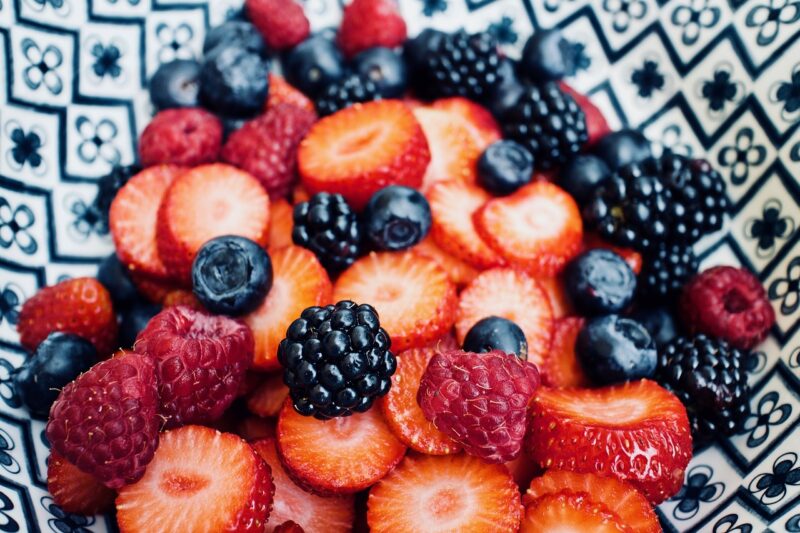Want to Eat Healthier? Start by Rethinking These Common Foods
November 10, 2024

Eating healthier doesn’t have to mean depriving yourself of your favorite foods. It begins with a simple rethinking of common foods in our diets and making smarter choices. Many traditional staples can be easily swapped out or modified to create healthier alternatives without sacrificing flavor or enjoyment. In this comprehensive guide, we’ll explore popular foods that can be reimagined to support a healthier lifestyle.
1. Bread: The Quest for Healthier Options
Bread is a staple in many diets, but not all bread is created equal. Many commercial breads are made with refined flours that offer little nutritional value. However, you can easily make better choices based on the type of bread you consume.
- Whole Grain Breads: Choose whole grain or whole wheat bread options. These alternatives contain more fiber and nutrients, helping to keep you fuller longer and supporting digestive health.
- Sourdough: This beloved bread not only has a unique flavor but also boasts a lower glycemic index, making it a healthier choice for managing blood sugar levels.
- Low-Carb Alternatives: Consider using lettuce wraps instead of bread for sandwiches. You can also try almond flour or coconut flour-based products for low-carb options.
Making the switch to healthier bread options can significantly boost your overall nutrition without the need to forgo your favorite sandwiches or toast.
2. Dairy: Exploring Healthier Dairy Options
Dairy products are a common part of many diets, but they can also be high in saturated fats and added sugars. Luckily, there are alternatives that provide all the benefits of dairy without the drawbacks.
- Opt for Low-Fat or Non-Fat Options: If you love milk, cheese, or yogurt, consider choosing low-fat or non-fat varieties to reduce calorie and fat intake without sacrificing nutritional benefits.
- Plant-Based Alternatives: Explore almond, oat, or soy milk for a dairy-free choice. Many plant-based yogurts are also available, offering options high in protein and probiotics without dairy’s saturated fat.
- Greek Yogurt: Greek yogurt is higher in protein than traditional yogurt, making it great for satiety and muscle repair. Look for plain varieties and add your own fruit or honey to control sweetness.
With these alternatives, you can enjoy the creaminess of dairy while prioritizing heart health and balanced nutrition.
3. Sugary Breakfast Cereals: Rethinking Your Morning Routine
Many people start their day with breakfast cereals that are often high in sugar and low in fiber. This can lead to energy spikes followed by crashes, making you feel hungry soon after eating.
- Choose Whole Grain Cereals: Look for cereals made from whole grains and with little to no added sugar. Options like oatmeal or high-fiber, low-sugar cereals are great choices to keep you satisfied throughout the morning.
- Add Nuts and Seeds: Boost the nutritional value of your breakfast by adding nuts or seeds for healthy fats, protein, and extra fiber. Consider topping oatmeal with chia seeds or adding almond slices to cereal.
- Fruit Over Sugar: Instead of sweetening your cereals with sugar, opt for fresh fruit. Berries, bananas, and apples add natural sweetness along with vitamins and antioxidants.
Transforming your breakfast choices can greatly impact your overall energy levels and health throughout the day.
4. Snacks: Making Healthier Choices
Snacking can either sabotage your dietary efforts or keep you energized and satisfied, depending on your choices. Many traditional snacks like chips and candy bars are high in calories and low in nutrition. However, there are plenty of alternatives that satisfy cravings while providing health benefits.
- Nuts and Seeds: These are nutrient-dense snacks that are high in healthy fats, fiber, and protein. They not only fill you up but also provide sustained energy throughout the day.
- Fruit and Veggie Platters: Snack on fresh fruits and vegetables paired with hummus or Greek yogurt dip. These snacks are colorful, filling, and full of vitamins and minerals.
- Dark Chocolate: Satisfy your sweet tooth with dark chocolate instead of milk chocolate. Dark chocolate contains antioxidants and can be more satisfying in smaller portions due to its richness.
Snacking mindfully and choosing healthier options can help you stay on track with your dietary goals without feeling deprived.
5. Cooking Oils: Choosing the Right Fats
The oils and fats we use for cooking can significantly impact our health. Many common oils are highly processed and can contribute to health issues when consumed in excess. However, healthier alternatives can improve your cooking without compromising flavor.
- Extra Virgin Olive Oil: This heart-healthy oil is rich in monounsaturated fats and antioxidants. Use it for dressings, sautéing, and drizzling over dishes for flavor enhancement.
- Avocado Oil: With a high smoke point and mild flavor, avocado oil is great for high-heat cooking and is rich in healthy fats, vitamins, and nutrients.
- Limit Saturated Fats: Reduce reliance on butter or palm oil, as they can increase cholesterol levels when consumed in excess. Opt for natural fats found in fish, nuts, and avocados instead.
Making small changes to the oils you use can lead to big improvements in your overall health.
Conclusion
Eating healthier doesn’t require drastic changes; it starts with rethinking the common foods we consume regularly. By swapping out unhealthy options for nutritious alternatives, you can easily make a positive impact on your health. Consider the suggestions presented in this article and start making adjustments to your diet today. Remember, each small change can lead to significant health benefits in the long run. Embrace the journey of healthier eating by discovering new flavors and enhancing your meals with beneficial ingredients. Soon enough, you’ll feel the difference in how you look and feel each day!








